Inflation is a useful tool in nature, allowing animals to project sounds, scare off predators or even attract a mate. Let’s bring on the bloat!
Painted tree frog
Calakmul Biosphere Reserve, Mexico
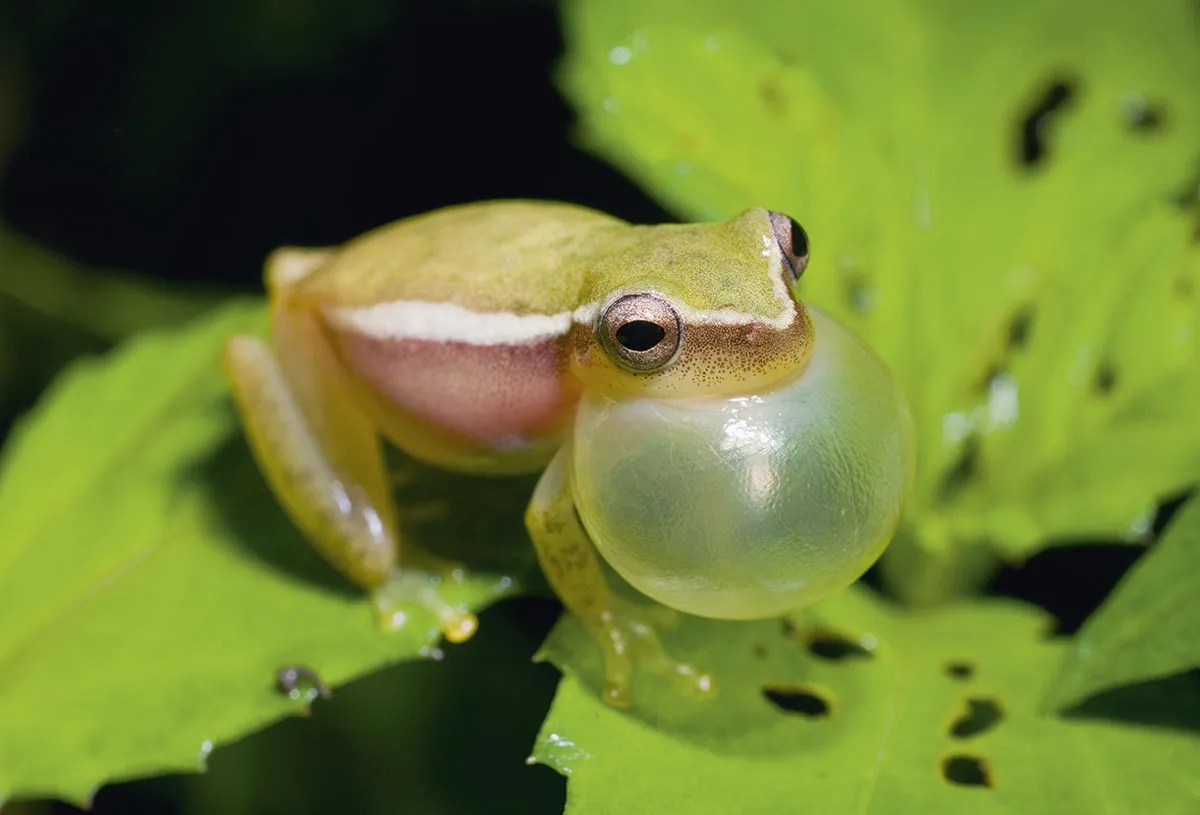
This painted tree frog produces a piercing screech that differs slightly in pitch to closely related species. To maintain the call for as long as possible, it squeezes the same breath of air back and forth across the larynx, creating a trilling sound.
This is just one of thousands of different kinds of frog calls, each unique to its own given species. “Vocal sacs differ enormously across frogs,” says herpetologist Dr Mark Scherz of the Natural History Museum of Denmark. “Some species have single sacs, some have paired sacs, some sacs even expand substantially down the body or expand hugely in front of the head.”
Even female frogs have taken to inflation. In 2021, scientists in Minnesota discovered that female green tree frogs inflate their lungs to cancel out the calls of rival species. The exact mechanism that causes this noise-cancelling effect is yet to be fully understood, but it is likely to help females locate males when multiple species congregate together at breeding ponds.
Greater Sage Grouse
South Dakota, USA
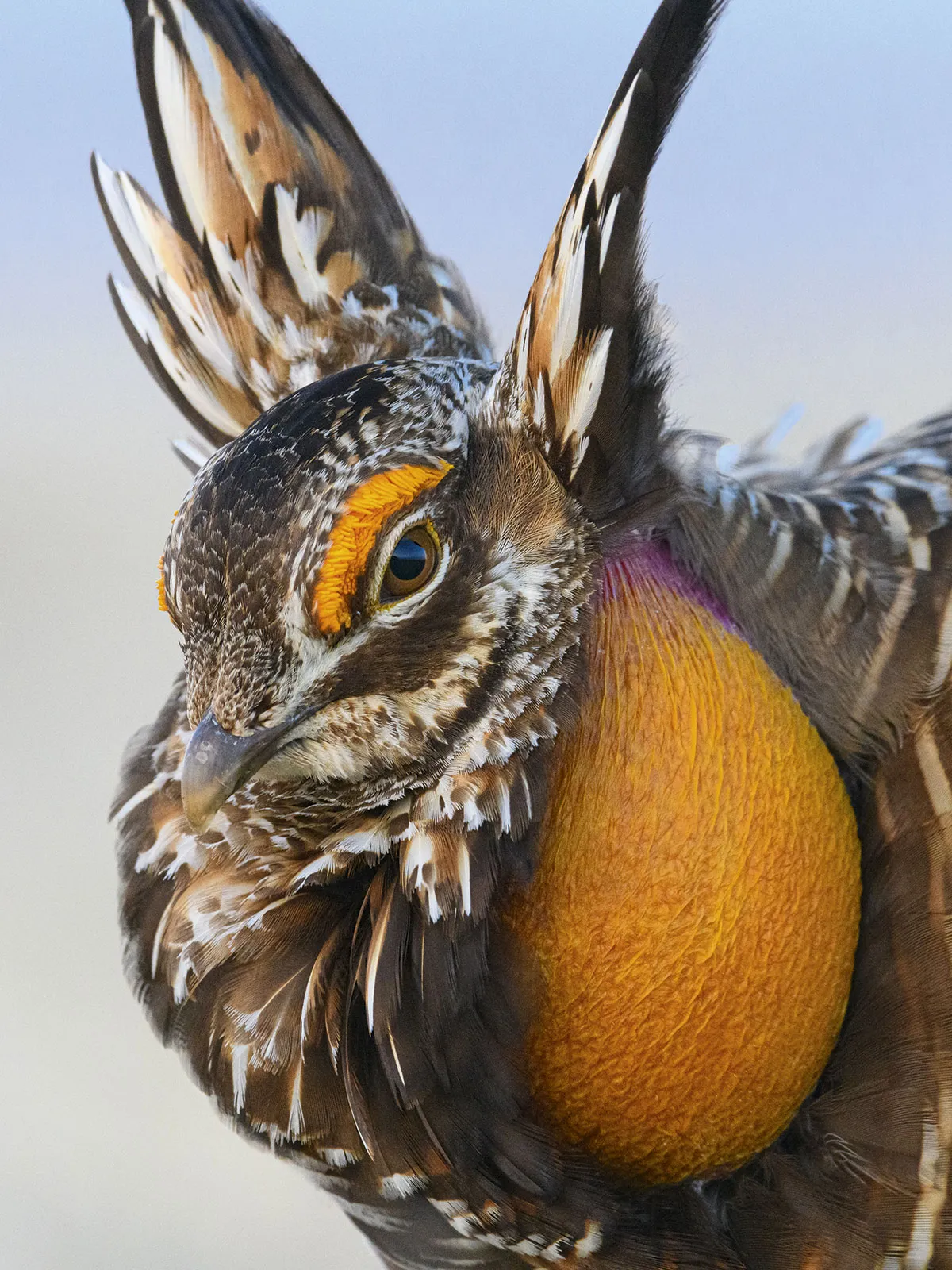
In birds, the voice box (called the syrinx) is double-barrelled. Some species, such as the greater sage grouse, also have a pair of vocal sacs, kept within a flexible throat pouch. As soundwaves escape from the syrinx they resonate against the elastic membrane of each sac which, as it inflates, is pulled taut like the skin of a drum. The throat pouch can also be brushed against the feathers on the wings to make a dramatic whooshing sound.
The resulting courtship noises are what evolutionary ecologist Prof Gail Patricelli calls a “swish, swish, coo, pop, whistle, pop,” performed while the male struts in front of potential mates.
“The first notes sound like the swish of corduroys. That’s followed by a gurgling or bubbling sound that comes out from the chest and through the vocal sacs,” she explains.
The final flourish is, quite literally, a boom – a loud, deep, resonant sound that can be heard more than a mile away.
On the whole, because larger animal bodies have longer vocal tracts and more spacious voice boxes, large animals make deeper calls than small animals. Yet, by allowing certain body parts to be inflated, natural selection has stumbled upon a mechanism to rig the system and allow medium-sized animals to make sounds many times greater than their size should allow.
Slender-spined porcupine fish
Victoria, Australia
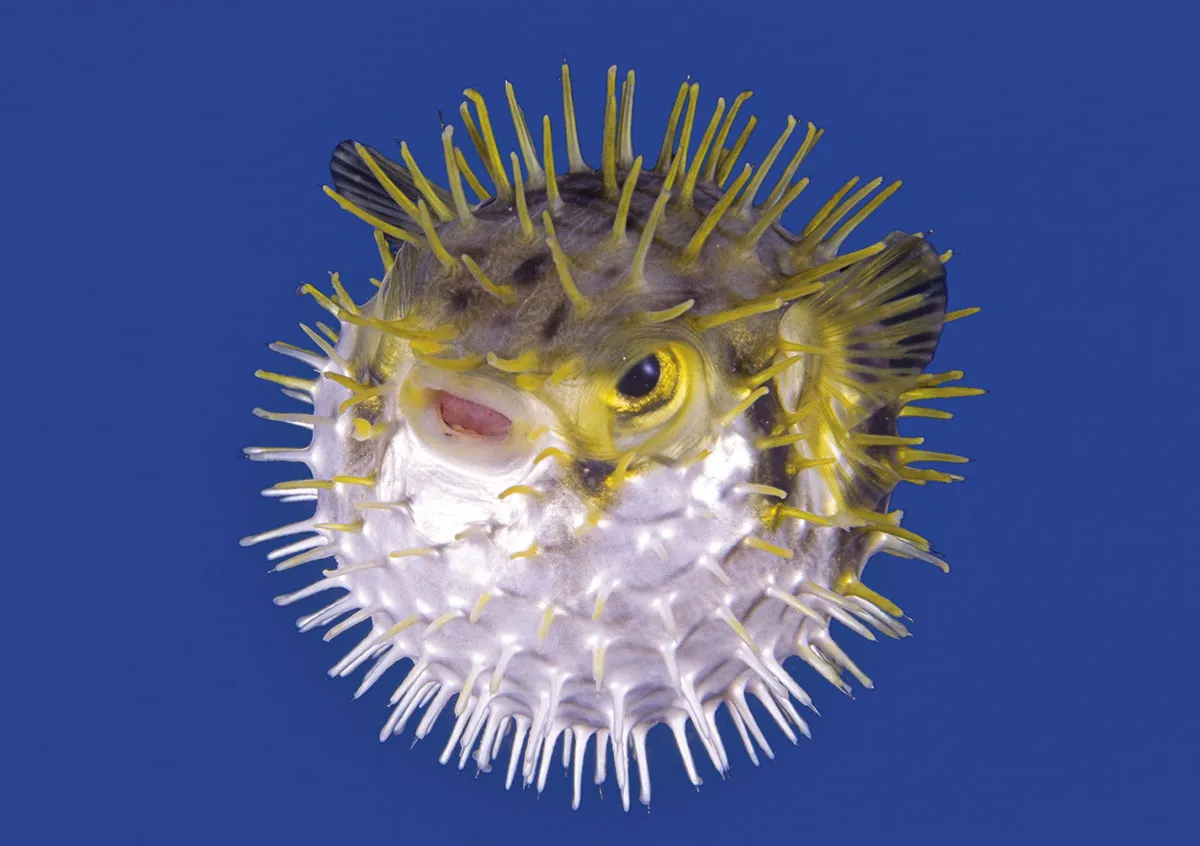
The neurological pathways that control a pufferfish’s puff have their roots in coughing. Closely related fish open their mouths and expand their throats in a similar manner, pulling water into the stomach which they then squirt out in a powerful ‘cough’ to dislodge items stuck in the mouth.
This routine behaviour has been taken to extremes in pufferfish, like this slender-spined porcupine fish. To reach full size, an inflating pufferfish takes in gulps of seawater at a rate of two gulps a second, a process which causes its stomach to stretch to many times its natural size. To make space for the water flooding in, the pufferfish abdominal cavity is pleated like an accordion. Ribs, common to most fish, are reduced in pufferfish.
Though their puffing-up temporarily hinders movement, the rewards for pufferfish are worth it. Predatory fish may choose to hunt something smaller. And if its size won’t convince them to back off, its spines might.
Siamang
Southeast Asia
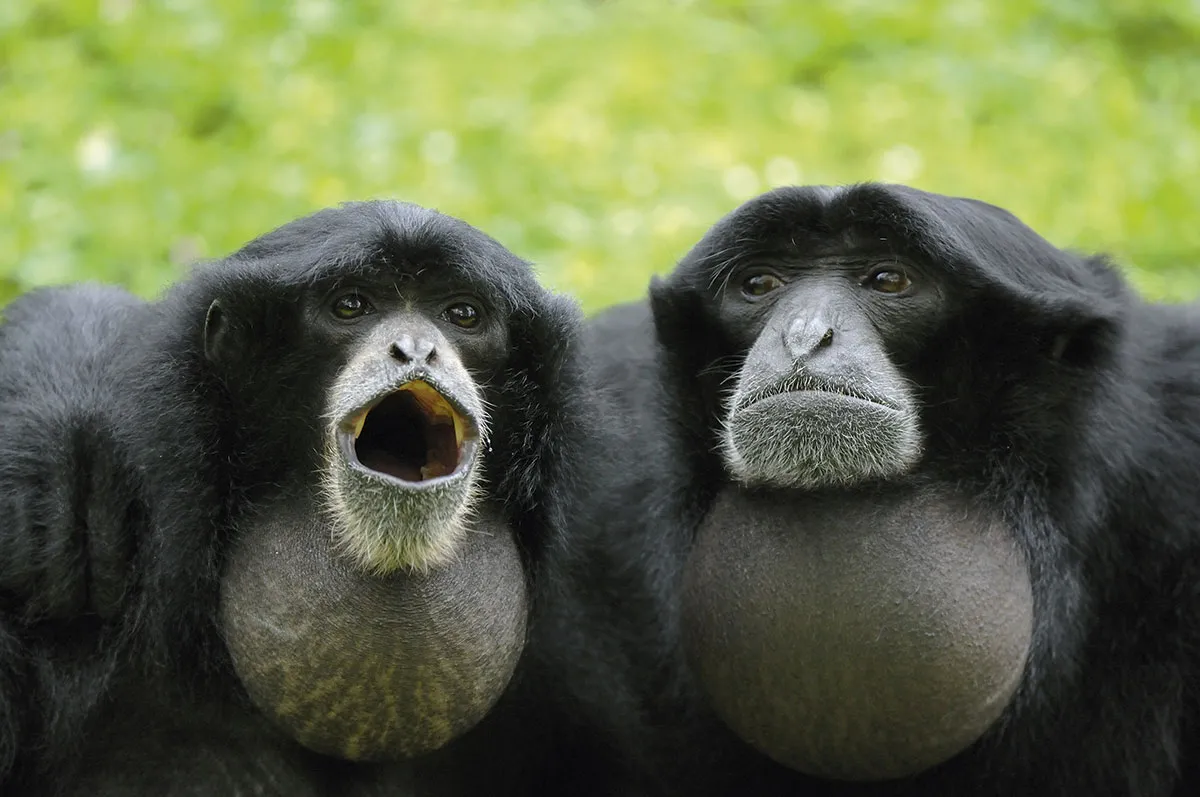
“In dense undergrowth, sound travels much better than visual cues,” says Paolo Viscardi, curator of zoology at the National Museum of Ireland. Siamangs are territorial, and defend their patch by calling. They have evolved a flexible pouch under the chin, which can be inflated to a size comparable to their head.
When air expelled from the lungs travels through the larynx, the sounds resonate within the pouch like a subwoofer in a speaker. This propels long-distance calls, that regularly top 100 decibels, more than three kilometres (two miles) across the forest canopy. By rapidly inflating their pouches and using their hands to manipulate the sounds coming from their mouth, siamangs are able to construct complex noises including barks, booms and ‘ululating’ bouts of screaming.
To help their calls travel further, siamangs call in the morning when the air is clearer. To stop their sounds from being muffled, they’ll avoid calling from trees covered with hanging vines.
Great frigatebird
Tower Island, Galápagos Islands

In the great frigatebird, the pelican-like throat pouch has been co-opted for marketing purposes, serving as a precious advertising hoarding that can be inflated at potential mates flying overhead. The male briskly drums its beak against the inflated pouch, creating a rhythmic rattling that travels easily in the ocean breeze. Should a female notice, she will come down for a closer inspection. The redder the pouch, the better.
“Red colours are generally rare in nature,” notes Prof Kevin McGraw, a behavioural ecologist who specialises in animal colours. “This is because they can be costly for some animals to produce, either in terms of the energy required to make them or because they risk being more easily spotted by predators.”
For females, the efforts that a male goes to in maintaining his bulbous bib are clearly worth it. “In choosing to mate with a redder male, females get a mate who’s showing they can incur those risks and still survive to show off,” McGraw adds.
Male hooded seal
Magdalen Islands, Canada

“On the pack ice, this inflated membrane is very visible,” says Sylvain Cordier, the wildlife photographer who captured this image of a male hooded seal. “The bigger and redder it is, the more interested the females become.”
To display this strange adaptation, the seal blocks off one of its nostrils and forces a jet of air into the other. This fast-flowing air catches a special membrane in the nostril that inflates like a balloon. Like a flag being raised and lowered, this signal communicates the size and strength of an individual male and helps keep rivals at bay.
Under the water, this inflatable sac has a different application. Connected to a large bladder that runs across the top of the head, it can be compressed in long or short bursts like a set of bagpipes, to create a range of musical notes. These underwater calls, recorded by scientists for the first time in 2021, include bursts of pulsating groans as well as ‘pings’ and ‘ouwah’ calls unique to hooded seals.
Though it may not have the beauty of birdsong, inflation of body parts can offer ways for animals to enhance their modes of communication.
African twig snake
South Africa
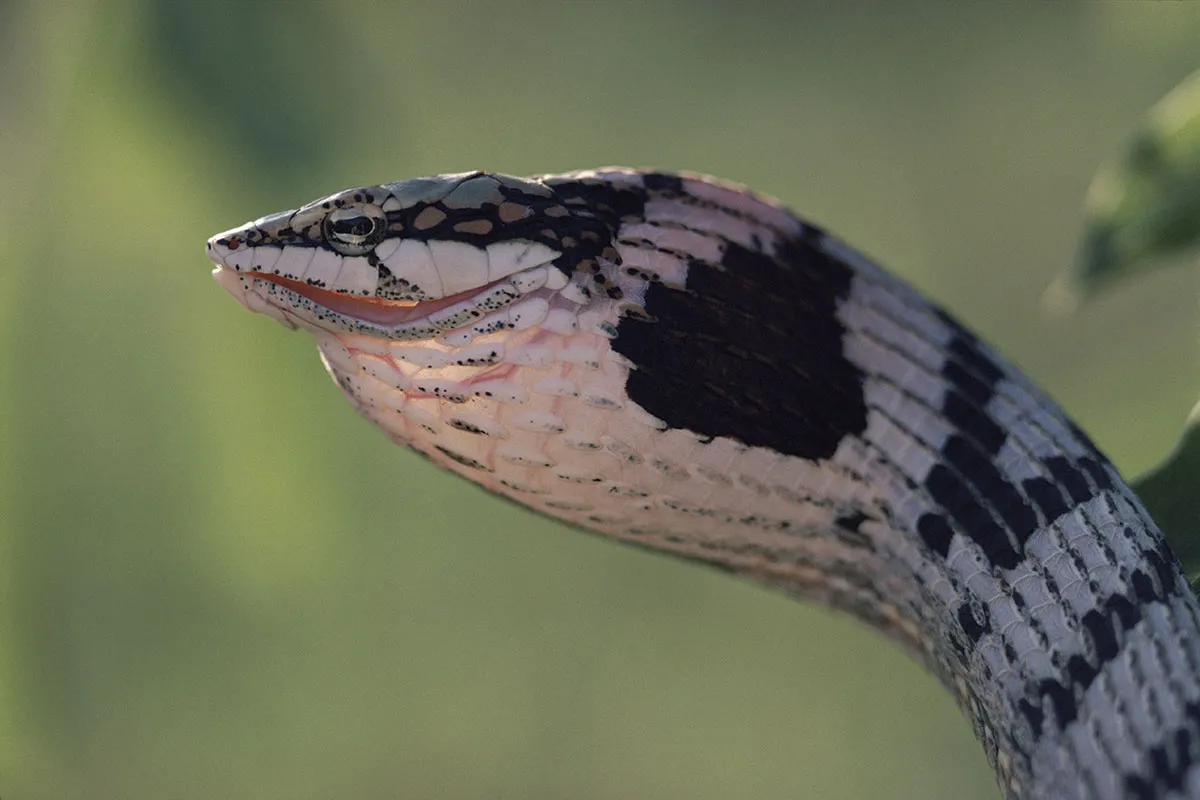
Rather than hiss or rattle their tails, African twig snakes opt for a more pneumatic approach. When threatened, these snakes pull air through the nostrils and inflate the throat to more than twice its normal size. As the twig snake expands, the scales upon its head stretch out to reveal conspicuous black markings on the scale edges.
Known as aposematism, this form of animal communication warns animals that run-ins with twig snakes are worth avoiding. Its venom is, after all, a powerful blood-thinner capable of killing red blood cells within seconds of a bite.
Twig snakes tend to inflate most when face-to-face with predators, including cats and dogs. But twig snakes are also known to inflate when mobbed by flocks of birds who are eager to drive the snake away from their territories. In fact, so pervasive is this mobbing behaviour that zoologists once thought that inflated twig snakes were mimicking baby birds, in their puffed-up, fledgling plumage. The idea was that adult birds, consumed by parental urges, might investigate a puffed-up twig snake only to end up as dinner.
- This article first appeared inissue 376ofBBC Science Focus Magazine–find out how to subscribe here
See more stunning wildlife photography: